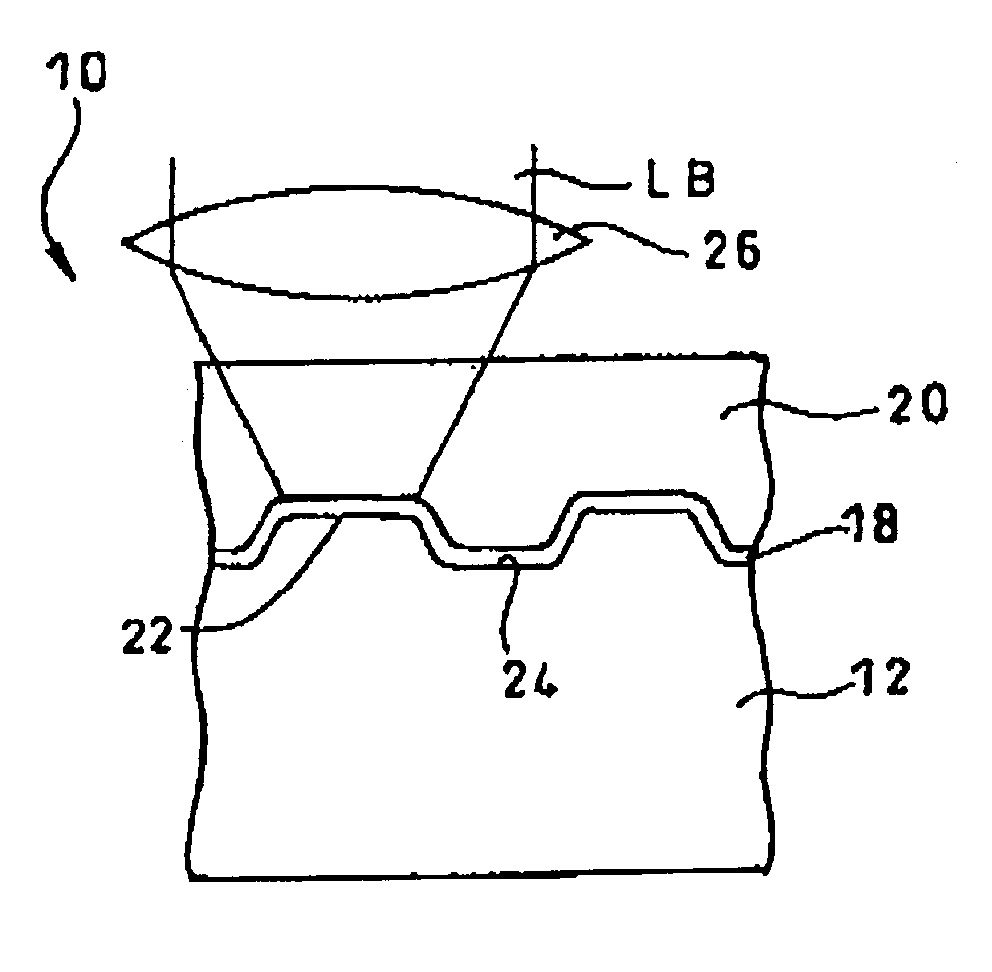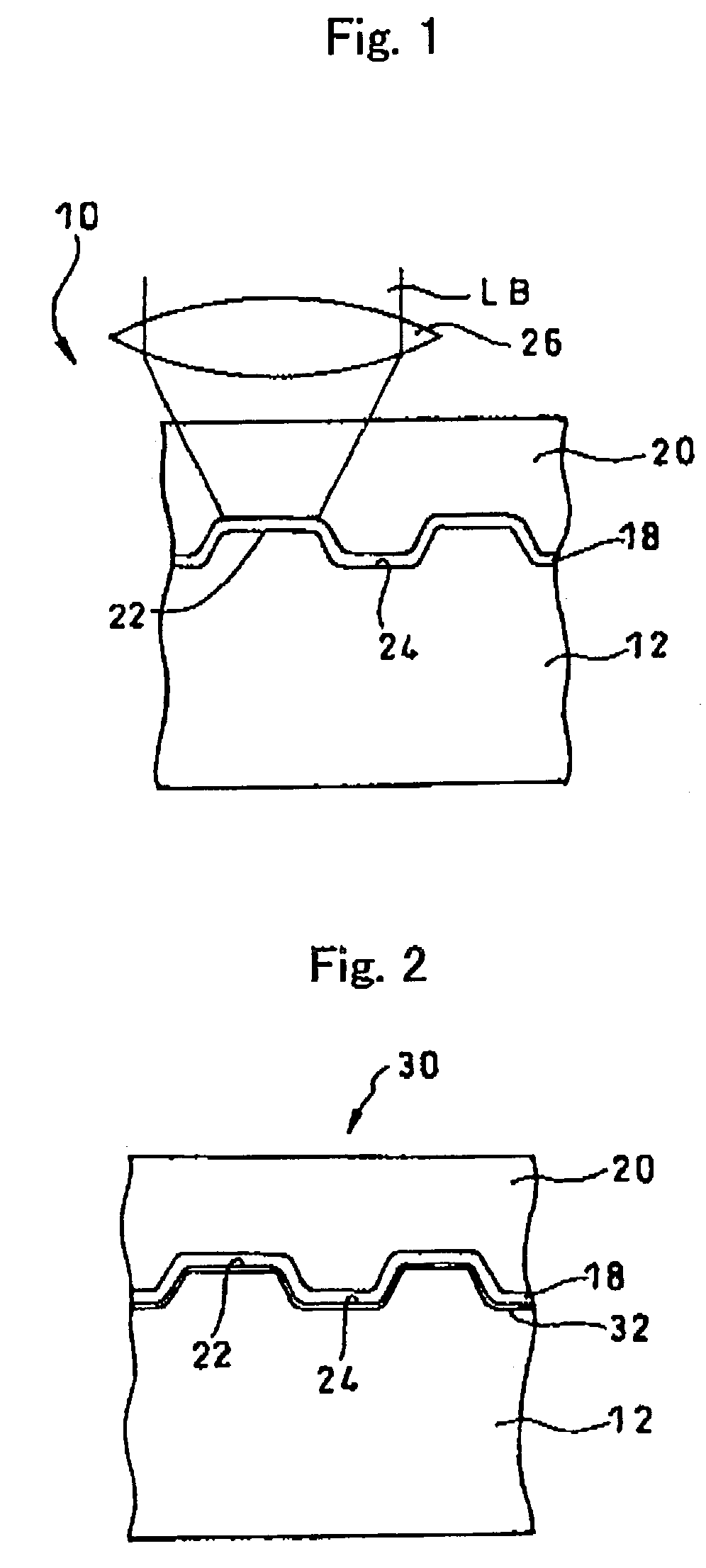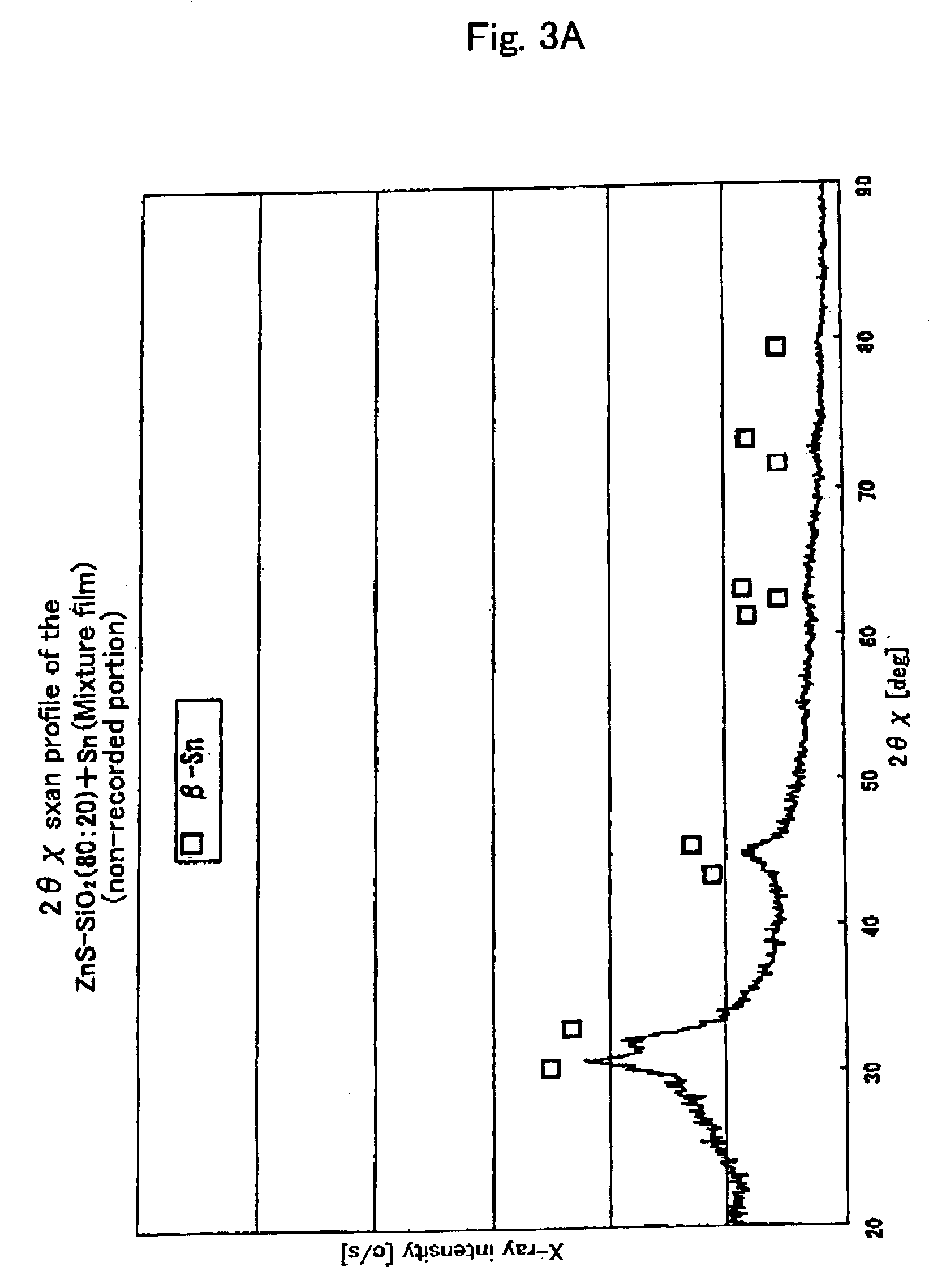Optical recording/reproducing method and optical recording medium
a recording medium and optical recording technology, applied in optical recording/reproducing/erasing methods, mechanical recording, instruments, etc., can solve the problems of difficult to improve the long-term storage reliability of the medium, warpage and tilt of the optical recording medium, and achieve excellent optical recording/reproducing characteristics and simple film structure
- Summary
- Abstract
- Description
- Claims
- Application Information
AI Technical Summary
Benefits of technology
Problems solved by technology
Method used
Image
Examples
examples and compared examples
[0080]Now the present invention will be explained more specifically along with some examples, but the invention is not limited to those examples.
[Preparation of the optical recording medium]
example 1
[0081]Optical recording media were fabricated via the following steps.
[0082]First, a polycarbonate substrate of which thickness was 1.1 mm and diameter was 120 mm was set in a sputtering apparatus. On the light reflection layer of this polycarbonate substrate, a recording layer having a thickness of 10 nm was formed by simultaneously sputtering the dielectric material made of a mixture of ZnS and SiO2 and the recording assist material made of Sn. It was designed to have the recording assist material and ZnS—SiO2 (80:20) at a molar ratio of 50:50.
[0083]Next, on the recording layer, an acrylic ultraviolet-curable resin was coated by the spin coating method and the light transmission layer (thickness: 100 μm) was formed by ultraviolet irradiation thereon.
[0084]The molar ratio between ZnS and Sio2 in the first and second dielectric layers was ZnS:SiO2=80:20 .
examples 2 and 3
[0085]Examples 2 and 3 were prepared in the same manner as in the example 1 except that Sn in the example 1 was replaced by Ag and Ti, respectively.
Compared Example
[0086]In the compared example, an optical recording medium was fabricated to have a single-layered structure where the recording layer was made of only Sn.
Example(s) 4–12
[0087]The optical recording medium with a recording layer of a single-layer structure was fabricated without forming any dielectric layer. The recording layer was made of a mixture of ZnS—SiO2 (ZnS:SiO2=80:20) and a metal or semi-metal of Mg, Nb, Bi, Mg, Au, Al, Au, Cu, Ta, or Si.
Example(s) 13–34
[0088]The optical recording media were fabricated by replacing ZnS—SiOz (ZnS:SiO2=80:20) employed in the examples 4–12 to other materials. Mg (examples 13–17), Ti (examples 18–25), Sn (examples 26,27), Nb (examples 28–30), or Al (examples 31–34) was mixed in the optical recording medium.
Example(s) 35–37
[0089]The optical recording medium with a recording layer of a...
PUM
| Property | Measurement | Unit |
|---|---|---|
| wavelength | aaaaa | aaaaa |
| wavelength | aaaaa | aaaaa |
| thick | aaaaa | aaaaa |
Abstract
Description
Claims
Application Information
 Login to View More
Login to View More - R&D
- Intellectual Property
- Life Sciences
- Materials
- Tech Scout
- Unparalleled Data Quality
- Higher Quality Content
- 60% Fewer Hallucinations
Browse by: Latest US Patents, China's latest patents, Technical Efficacy Thesaurus, Application Domain, Technology Topic, Popular Technical Reports.
© 2025 PatSnap. All rights reserved.Legal|Privacy policy|Modern Slavery Act Transparency Statement|Sitemap|About US| Contact US: help@patsnap.com



